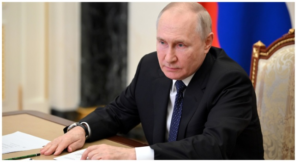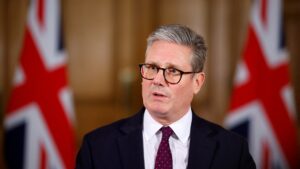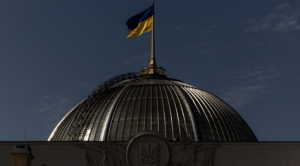
The European Central Bank tried to dampen speculation on a streak of interest rate cuts on Wednesday even as it acknowledged encouraging data about slowing price and wage rises.
Many ECB policymakers have expressed support for a first reduction in borrowing costs from their current record highs, most likely in June, with the debate now focused on how many more cuts would follow.
But President Christine Lagarde said the ECB could not commit to a certain number of rate cuts even after it starts reducing borrowing costs.
“Our decisions will have to remain data dependent and meeting-by-meeting, responding to new information as it comes in,” Lagarde said. “This implies that, even after the first rate cut, we cannot pre-commit to a particular rate path,” she told a conference in Frankfurt.
Echoing Lagarde, the ECB’s chief economist Philip Lane said he and colleagues will be “calibrating for a long time to come” the appropriate level of rates.
And fellow board member Isabel Schnabel even raised the prospect of a new era of structurally higher interest rates.
“The exceptional investment needs arising from structural challenges related to the climate transition, the digital transformation and geopolitical shifts may have a persistent positive impact on the natural rate of interest,” Schnabel said.
Money markets are pencilling in three cuts by December with some chance of a fourth, which would lower the 4% rate the ECB pays on bank deposits to 3.25% or 3.0%.
Inflation in the euro zone has fallen from a double-digit percentage increase in the autumn of 2022 to 2.6% last month.
And Lagarde hinted that this fall was likely to be “more durable and less beholden to assumptions about commodity prices” than in the past due to an expected fall in underlying inflation, which strip out volatile food and energy prices.
On the flipside, the euro zone’s economic growth has stagnated and Spanish central bank governor Pablo Hernandez de Cos said event there was some evidence that the ECB’s rate hikes were having a bigger impact than anticipated.
“We shall be closely monitoring the materialisation of such risks and calibrate accordingly the degree of monetary restriction,” de Cos told the same event.
Advertisement · Scroll to continue
But Lagarde spelled out the conditions needed for the ECB to start cutting rates: slowing wage growth, a continued fall in inflation and new internal projections confirming that price growth is returning to its 2% target.
“If these data reveal a sufficient degree of alignment between the path of underlying inflation and our projections, and assuming transmission remains strong, we will be able to move into the dialling back phase of our policy cycle and make policy less restrictive,” Lagarde said.
The ECB will hold policy meetings on April 11, June 6, July 18, Sept 12, Oct 17 and Dec 12.
Some ECB governors, including Latvia’s Martins Kazaks and the Netherlands’ Klaas Knot have highlighted the advantage of moving when new forecasts are published — that is in June, September and December.
By contrast, Greek central bank governor Yannis Stournaras, opens new tab said two cuts before the ECB’s summer break in August seemed reasonable, followed by two more by the end of the year.
Frederik Ducrozet, head of macroeconomic research at Pictet Wealth Management, said Lagarde’s comments on Wednesday would form the basis for reaching consensus among policymakers.
“We expect the ECB to cut rates in June, pause in July (although the doves may push harder), and resume cutting at every meeting from September,” he said on Twitter.




